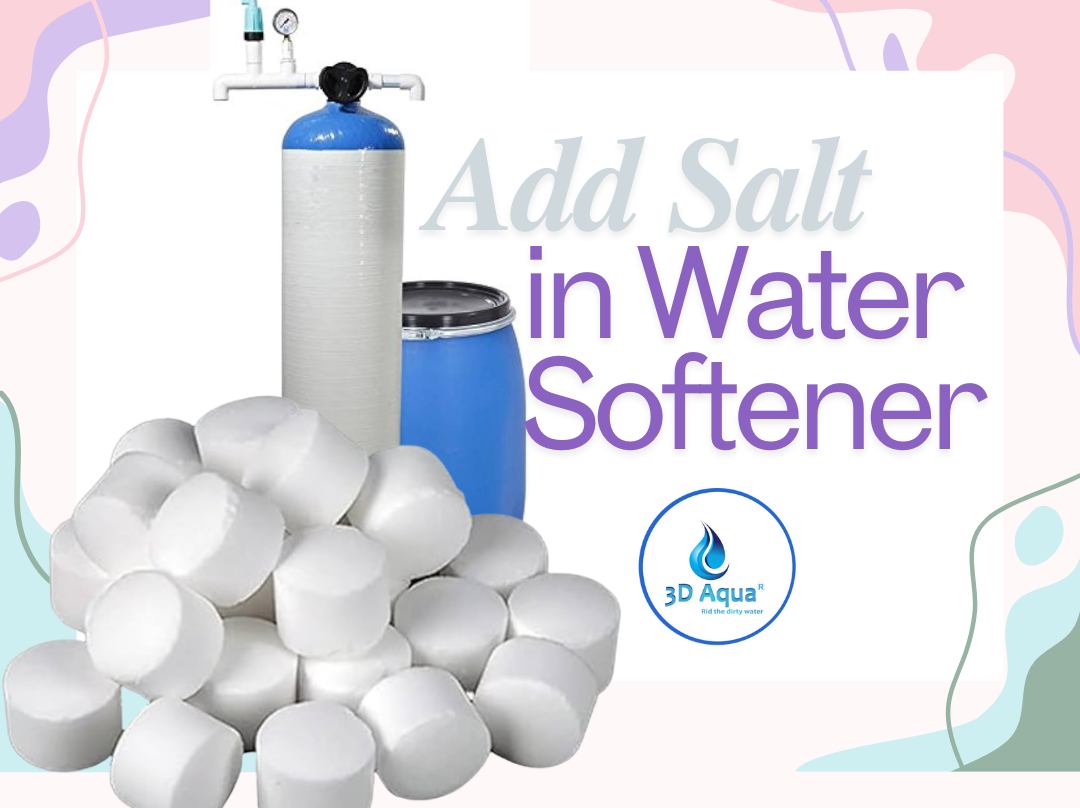Adding salt to your water softener is a critical maintenance task that helps keep your system functioning efficiently. But how often should you be adding salt, and how do you know when it’s time? Several factors play a role in determining how frequently your water softener requires salt, such as the type of softener, the size of your brine tank, water hardness, and the amount of water your household uses. In this guide, we’ll walk you through the important considerations for maintaining the proper salt levels in your water softener.
How Often Should You Add Salt to Your Water Softener?
1. Understanding the Role of Salt in Water Softening
Salt is essential for the ion exchange process in your water softener. The system works by exchanging calcium and magnesium ions, which cause hard water, with sodium ions from the salt. This process is what “softens” the water, making it gentler on your skin, plumbing, and appliances.
The salt you add to the brine tank helps regenerate the resin beads inside the softener, allowing them to continue removing hardness from your water. Without the proper amount of salt, your water softener can’t function properly, leading to poor water quality and even damage to your system.
2. Checking the Salt Levels in Your Brine Tank
To maintain your water softener, it’s important to monitor the salt levels in the brine tank regularly. Here’s how you can do this:
- Lift the tank cover: Open the lid of the brine tank to check the salt level inside.
- Assess the salt condition: If the salt is dry and the level is less than half full, it’s time to add more salt. If the salt looks wet or if you see water above the salt, top it off until the salt level is about halfway full.
It’s important to keep the salt at the right level to ensure the system regenerates effectively and prevents issues like salt bridges or improper regeneration cycles.
3. Factors That Affect How Often You Add Salt
Several factors influence how often you need to add salt to your water softener. These include the size of your brine tank, the hardness of your water, and your household’s water usage. Here’s how each of these factors can impact salt consumption:
- Water hardness: The harder your water, the more salt your system will use. Hard water has a higher concentration of calcium and magnesium, which requires more salt for the ion exchange process.
- Household water usage: Larger households that use more water will require more frequent salt replenishments. If you have more people in your home or high water consumption, your softener will regenerate more often, using up salt at a faster rate.
- Brine tank size: Larger tanks hold more salt, meaning you won’t need to add salt as often. Conversely, smaller tanks will need to be replenished more frequently.
4. The Impact of Your Softener’s Age
The age of your water softener can also play a role in how often you need to add salt. Older models tend to be less efficient than newer ones, which means they might consume more salt over time. If your water softener is more than 10 years old, it could use salt at a higher rate than a newer system.
Modern, energy-efficient water softeners are designed to use less salt and regenerate only when necessary, rather than on a set schedule. Many newer models are equipped with demand-initiated regeneration (DIR), meaning they regenerate based on your water usage patterns rather than at regular intervals. These systems often have low salt indicators or even remote monitoring alerts that notify you when the salt level is running low, making maintenance easier.
Typically, a newer system will require salt replenishment every 6 to 8 weeks. However, you should still check the salt levels periodically to ensure that everything is functioning correctly.
5. Avoiding Salt Bridges and Mushing
A common problem with water softeners is the formation of a salt bridge. This occurs when the salt forms a hard crust on the surface of the brine tank, preventing the water from reaching the salt. As a result, your softener won’t regenerate properly, and you may notice a decline in water softness.
Salt bridges can form for several reasons, including high humidity, using low-quality salt, or overfilling the brine tank. To avoid this issue:
- Inspect your softener every 2 to 3 months: Check to ensure there’s no salt bridge or crust formation.
- Use high-quality salt: Low-quality salt tends to contain impurities that can cause bridging.
- Keep your brine tank half full: Avoid overfilling the tank, as this can cause the salt to compact and form a bridge.
- Install your softener in a low-humidity area: High humidity can contribute to the formation of salt bridges.
If you suspect a salt bridge has formed, you can usually break it up by gently tapping the sides of the brine tank with a hammer or using a broomstick to loosen the crust.
6. How Much Salt Should You Add?
The amount of salt you need to add depends on several factors, including your water softener’s size and your water usage. As a general guideline:
- Smaller households: For homes with 1-2 people, you might need to add salt every 4 to 6 weeks.
- Medium to large households: Homes with 3-4 people generally need to add salt every 6 to 8 weeks.
- High water usage: If your household uses a significant amount of water (for instance, with many people, pets, or high-efficiency appliances), you may need to add salt more frequently.
As mentioned earlier, newer models with demand-initiated regeneration systems will typically need salt added every 6 to 8 weeks. Older models or systems with less efficient regeneration cycles may require more frequent attention.
7. What Type of Salt Is Best for My Water Softener?
Choosing the right type of salt for your water softener is also essential. Most water softeners work well with either rock salt, solar salt, or evaporated salt. Here’s a quick breakdown of each type:
- Rock salt: This is the most affordable option, but it contains impurities that can lead to bridging and other issues.
- Solar salt: Solar salt is made by evaporating seawater and is a better choice for reducing impurities. It is commonly available in both crystals and pellets.
- Evaporated salt: This is the purest form of salt, containing fewer impurities and ideal for preventing salt bridges and ensuring efficient performance.
Consult your owner’s manual to determine the best type of salt for your specific model. Using the right kind of salt will help your system function more efficiently and reduce the risk of problems like bridging.
Conclusion
Knowing when to add salt to your water softener is crucial to keeping your system running smoothly and ensuring you always have soft water. Regularly checking the salt levels, inspecting for salt bridges, and maintaining the proper salt type will keep your water softener in optimal condition. Depending on the age of your system and your household’s water usage, you may need to add salt every 6 to 8 weeks.
By staying on top of salt maintenance, you’ll extend the lifespan of your water softener, improve the quality of your water, and protect your plumbing and appliances from the negative effects of hard water.

